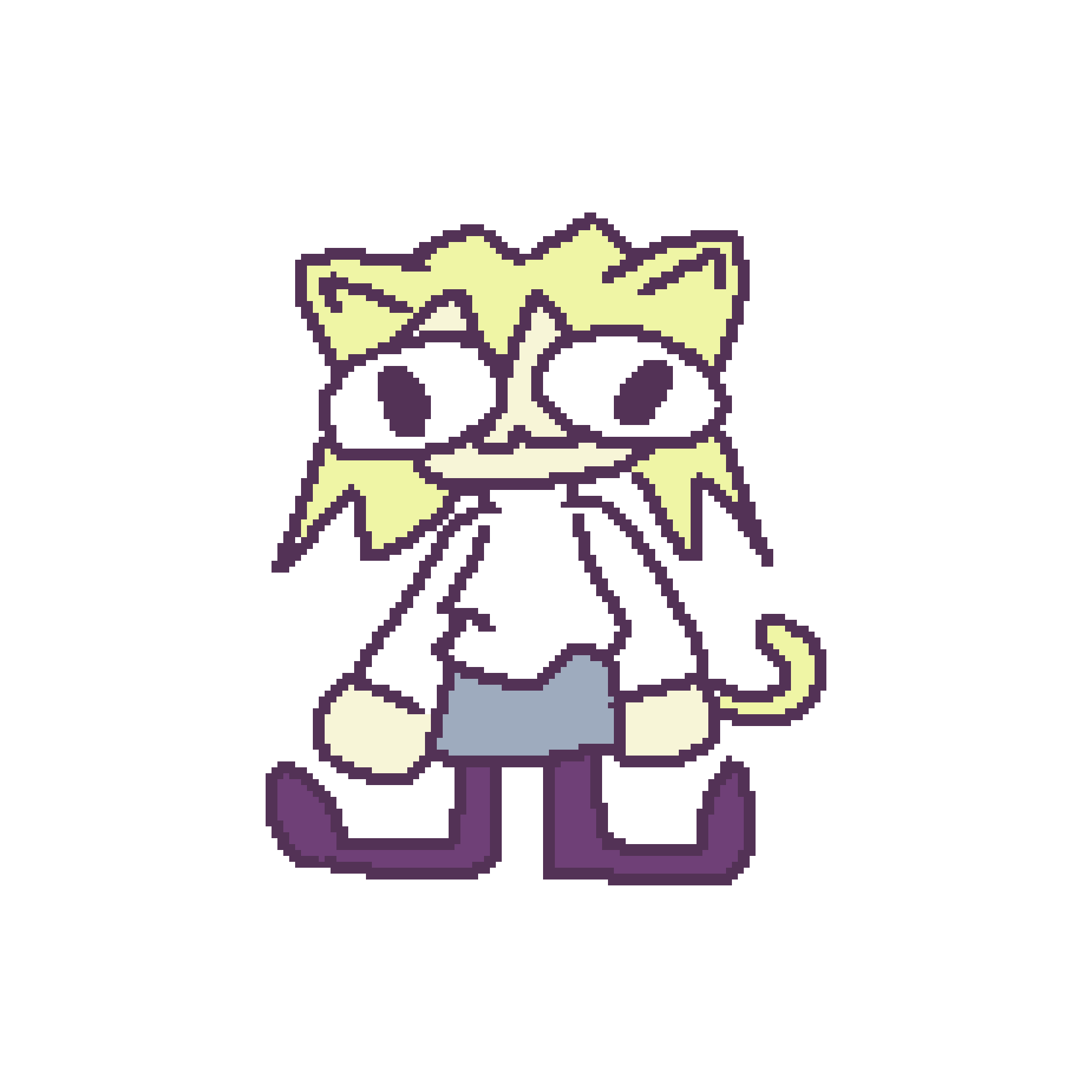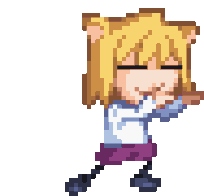how i made funny cat
03.08.2024
I originally wrote this as a reply to a comment from KTBubz14 on Funny Cat on Newgrounds asking for tips on how to write music like it.
I started out with writing the bassline of the song, I was referencing Crescendolls by Daft Punk and you can probably tell by listening to both that the intro bassline is pretty similar to it. The drums are also written in a 4 on the floor house beat (meaning that every beat has a kick and every offbeat has a snare, I change this up for transitions between sections) which is borrowed from the Daft Punk song and most disco/house music.
I was referencing funk and disco, so I have the guitar strumming a dominant 9 chord as the I chord. Dominant chords are pretty common in funk because they're tense without being annoying to listen to for a long time. They sound tense enough that you can stay on that chord for a while without it getting boring. The meow melody is playing in major over this chord, which has a little bit of a clash with the major scale having the major seven and the dominant chord having the minor seven, but this tension doesn't sound too weird in this genre, and I mainly use the major seven in the melody as a passing note instead of a note that I hold on. If I held that note for a long time the dissonance would be a lot more obvious.
In the bridge I switch to regular D major without the dominant chord for contrast, and the chord progression is more complicated than the chords in the previous parts of the song. Up until this point the song is mostly staying just on the I chord, so this harmonic contrast gives the listener a break from the repetition of this one chord. This section is also written in lydian, which I'm pretty sure I did unintentionally, but still gives a lot of contrast to the section before it. Lydian is a pretty bright and happy mode that a lot of game music uses to evoke a lighthearted tone. (this video: https://www.youtube.com/watch?v=XElvBrpaUP8r explains how this mode is used really well. I would recommend checking out this guys stuff if you already know some theory and want to learn more. His pilotwings and dorian mode video also do a good job of explaining some common writing techniques in funk music.) Lydian is also technically different from major, but it's just one note off from it so I lump them together because they have a very similar sound. I think of it kind of like how harmonic minor and melodic minor are different modes, but are both minor. Lydian is kind of just "silly major" to me. This is the chord progression in this section: Imaj7-IImaj7-IVmaj7-iii7sus4 (look up roman numeral chord notation if this doesn't make sense) I'm using the major II chord, which is usually a minor chord in major keys. This difference is because of the notes from lydian, and is one of the more common ways that the mode is used.
The melody in this section is written in a mix of major and lydian, with some chromatic approach tones to make it sound a little more goofy. I mainly only used the lydian notes when the melody plays over the II chord, because that's the lydian chord. I try to mix intervalic melody lines with linear ones. Meaning I'll have some notes that leap larger intervals within the scale, like 3rds, 4ths, and 5ths. I have two times where I jump a minor 6th but I try to keep the intervals to 5ths and below because anything higher is usually too big of a leap and makes the melody less hummable/comprehensible. I mix these large interval leaps with linear lines, which are melody lines that only go 1 or 2 semitones within the scale. I like writing melodies like this because it keeps them interesting but also doesn't make them too complicated. The melodies in this song are more complicated than something I would write now and probably not very hummable, but I think the idea behind writing melodies like this still applies. (Linear melody writing is a term I think I made up because I can't find it when I look it up, sorry if you're trying to look into that but can't find anything.)
Another thing I do a lot in my melody writing is put what I think are called accidentals before some notes, it's a small note, usually a 1/32nd note, placed immediately before the note I'm aiming for, one semitone below. The accidental is placed on beat and the note that I'm aiming for is played after the 1/32nd is played. This is an annoying long explanation but it's the only way I could figure out how to explain it in text. It's basically like a pitch bend or a glide up to the note as it would be played on something like a piano. It's a common technique in jazz writing and playing to give some notes more emphasize than others, and it makes your playing sound more expressive. Another thing I do to make my melodies more expressive is mixing note lengths to create more rhythm in the melody, like making passing notes shorter to de-emphasize them in comparison to the main notes in the melody. This type of writing takes some feeling out to get the hang of, you have to get a feel for what notes you want to emphasis in your phrasing. This type of expressive rhythmic playing is also really common in jazz, especially in solos.
More on the production side, I do a lot of layering of instruments in this song to make things sound more full, I layer the strumming guitar with a synth similar to a clavinet, and after the intro I introduce a muted guitar style synth, and a chord synth playing a "wa wa" thing if you listen closely. I also layer the meow with a synth. This kind of thing is common in electronic music and it's how they get things to sound so big. I also layer the bass with a sine wave to give it more sub bass which also helps to make the bass and song as a whole sound more full. The bridge section is where the layering becomes more obvious, since the arpeggiated guitar chords are layered with two other instruments, a piano soundfont and a synth. The piano is kind of an arbitrary sound design choice since it makes it sound more twangy, but the idea is still the same, to make things sound fuller. I also have a rhodes behind those arpeggiated chords playing the chords without arpeggiating them. The flute is also three different flutes layered on top of eachother, two of them are panned slightly to make it sound wider. In the bridge I also switch the bass to a dubsteppy wub bass, this is
Some more production techniques I used in mixing it are sidechain, parallel compression, layering (which I already talked about up there), bitcrushing, eq and compression. eq and compression are basically necessary to put on every instrument in mixing, eq controls what frequencies your instruments take up and compression controls the dynamics of them. bitcrushing is a sound design technique to make things sound crunchier. I put it on the regular bass and the dubstep wub bass. It adds more upper range harmonics that make them cut through the mix a lot better. parallel compression is mainly something I use on drums, it sends them to an extremely compressed signal that's put on half volume and layered with the uncompressed version. This gives the drums more punch without taking away as much from the original uncompressed version. sidechain is arguably the most important in this style of music, it's the main thing that makes house music sound like house music. basically, it ducks all the non-drum instruments every time the kick is played. This lets the kick cut through the mix a lot and makes it become the most important thing when it plays. I sometimes put sidechain on my hi-hats as well but this sometimes leads to some messy clicky transients because of the sidechain I use. I also use a lot of saturation, both on the drums and the master as well as any instrument I want to make cut through the mix more. At the time I used this a ton and can sound pretty bad if used too much, like I did on the record scratch. Sounds harsh on your ears.

BACK